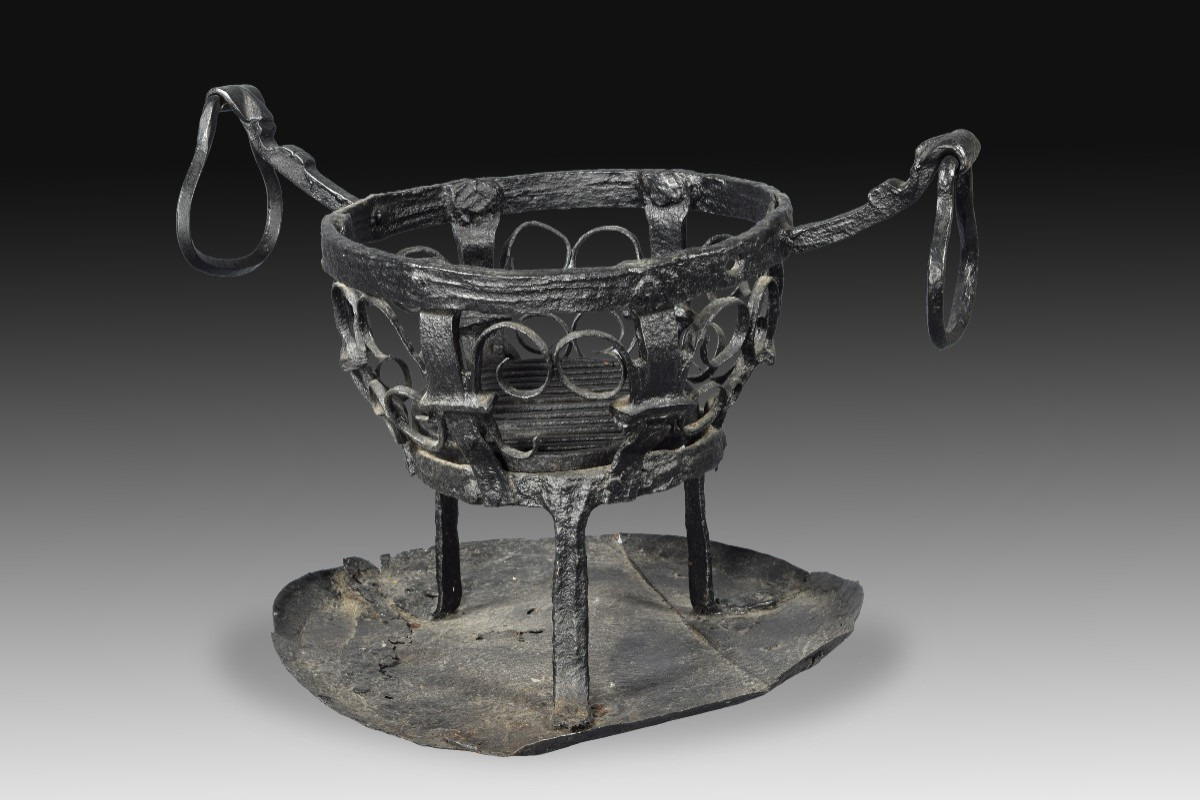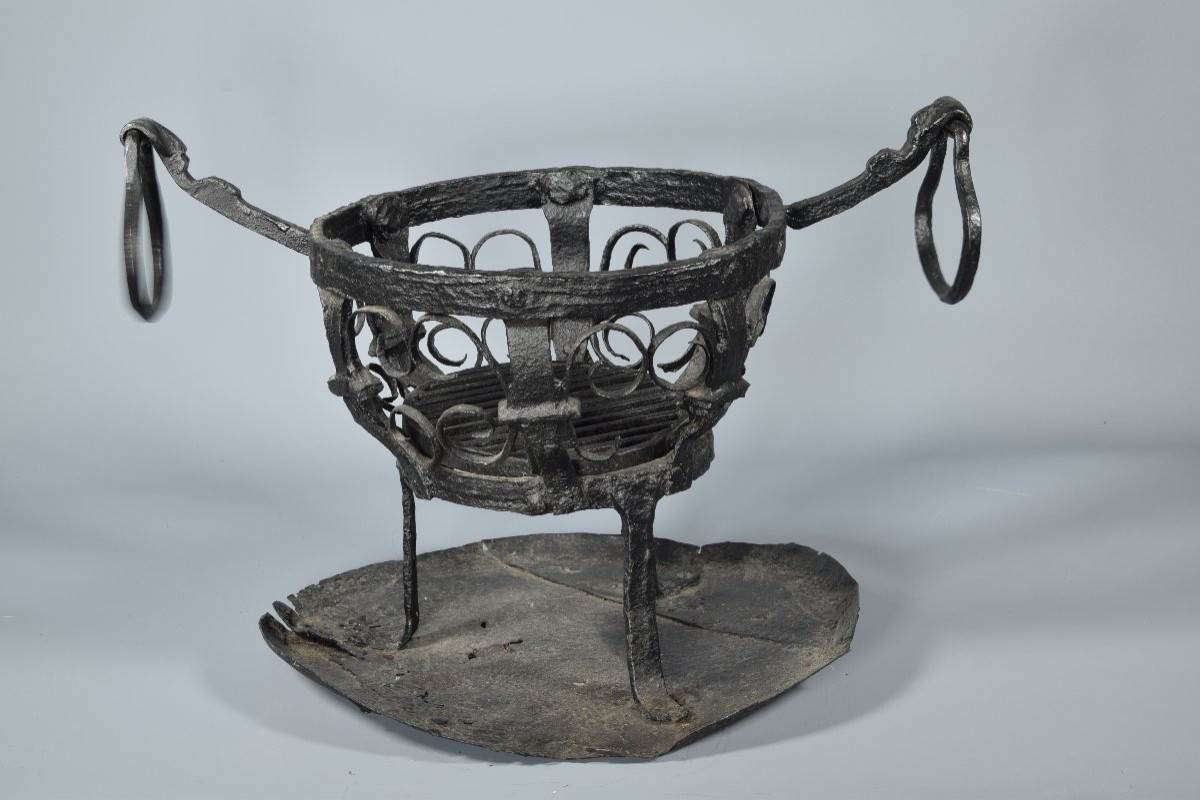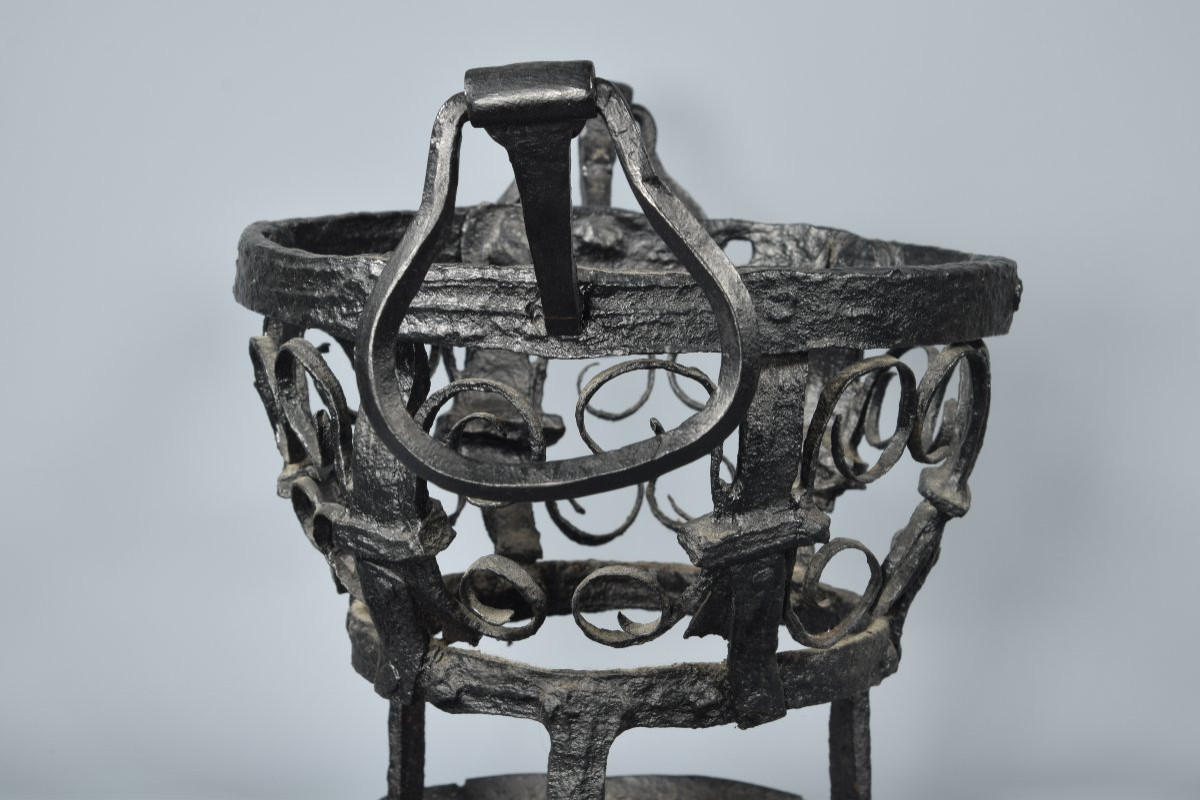One of the handles has been restored. Rear grill. Reference: "The Art of Iron. Barcelona: Santiago Rusiñol, 2007, p. 151, image 137. Wrought iron brazier, consisting of a circular base, three flat feet, a body formed by two flat rings joined by vertical sections decorated with simple confronted volutes, and two handles on the upper part, similar to the sections and finished with roundels. Inside, there is an iron grate of a later date than the rest of the piece and a restoration on one of the handles. It is very similar to another wrought iron brazier dating from the 12th or 13th century that is currently in a private collection; also to be compared with the rectangular brazier in the Museu Episcopal de Vic dated from the 14th century. The spirals that form the decoration of the piece are frequently called "curled irons", and are an element very often used in the few examples of Romanesque ironwork and ironwork that we have preserved, and, for this same reason, these are elements that would be maintained in forging works for centuries in Spain (the Romanesque model with its volutes lasted well beyond the 15th century, with some variations). For example, the grilles of the church of Santa María del Camino or del Mercado in León or the one that was placed in the choir of the church of San Vicente de Ávila, or those preserved in the Diocesan Museum of Jaca (Huesca). As it is a work made for utilitarian purposes, the absence of decorative elements is normal, as is the transformation of the decoration into functional parts of the brazier. The examples of Romanesque braziers that have come down to us are even rarer than those made of ironwork. One example is preserved in the Diocesan Museum of Tarragona and another in the Junta de Castilla, both square but with this same type of spirals, and others are found in important museums and collections such as the National Archaeological Museum, Tarragona Cathedral, etc.
Weight: 7.5 kg. - Dimensions: 52x39x54 cm


















































 Le Magazine de PROANTIC
Le Magazine de PROANTIC TRÉSORS Magazine
TRÉSORS Magazine Rivista Artiquariato
Rivista Artiquariato